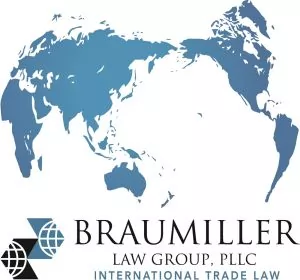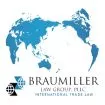U.S. industries supplying Chinese facilities with products, equipment, software, and technology used in semiconductor development and production are subject to regulatory controls under the Export Administration Regulations ("EAR"). New rules published by the Department of Commerce's Bureau of Industry and Security ("BIS") on October 13, 2022, 87 FR 62186, imposed additional license requirements regarding the export, reexport, or transfer of certain items, equipment, software, and technology to The People's Republic of China ("PRC" or "China"). The implementation of these rules is expected to be one of many measures taken by the Department of Commerce to strangle China's plans of becoming a world-stage manufacturer of semiconductors.
The new restrictions include end-use and end-user controls, Foreign Direct Product ("FDP") rules for advanced computers, supercomputing, and transactions involving Entity List companies and persons, item-specific controls providing for additional Export Control Classification Numbers ("ECCNs") that expand the Commerce Control List ("CC") in Categories 3 through 5, Regional Stability requirements on related items, the addition of 28 entities to the Unverified List, and restrictions on activities by U.S. persons located anywhere involving items not subject to the EAR. Licence applications for controlled items to China are reviewed with a presumption of denial, so do not expect to obtain a license absent extenuating circumstances.
I. Prohibitions on Transactions Involving Chinese Facilities Developing or Producing Integrated Circuits Above Certain Technology Thresholds
Many of the new BIS license requirements are determined based on the PRC semiconductor fabrication facility's development or production of integrated circuits to certain thresholds of technology parameters. The relevant thresholds of technology parameters that cannot be met or exceeded are listed below.
- 1) Logic integrated circuits using a non-planar transistor architecture or with a "production" technology node of 16/14 nanometers or less;
- 2) NOT AND (NAND) memory integrated circuits with 128 layers or more; or
- 3) Dynamic random-access memory (DRAM) integrated circuits using a "production" technology node of 18 nanometer half-pitch or less.
If the semiconductor fabrication facility in the PRC develops or produces integrated circuits meeting or exceeding any of the technology parameters described above, the export, reexport, or transfer of items to that location will likely require a license - even for items that are EAR99, or not subject to the EAR. Items that are subject to the EAR (even EAR99) are provided for under the end-use restrictions under 15 C.F.R. § 744.23. Likewise, items that are not subject to the EAR whose transfers are "facilitated" by U.S. persons are provided for under the restrictions of 15 C.F.R. §744.6. Therefore, the export, reexport, or transfer of any item to China is regulated for the prohibited end-uses, unless the item is foreign-sourced with non-U.S. persons accomplishing the transfers.
BIS provided clarity on the term "semiconductor fabrication facility" in its published FAQs for the Interim Final Rule, dated Oct. 28, 2022, where the agency interpreted the term to include the location where the production at "the restricted technology level occurs." The BIS guidance used the term "production" in reference to the FAQ posed regarding production lines, but the term semiconductor fabrication facility extends to the location where the development (design) of the "restricted technology level occurs." BIS's ISTAC Written Presentation of Assistant Secretary Thea D. Rozman Kendler, dated November 2, 2022, provided that items exported to fabless design houses in China are also covered by the restrictions. Based on this enforcement guidance from the agency, BIS will view transfers of items to facilities in China merely capable of integrated circuit development, without production capabilities, as transfers to semiconductor fabrication facilities and prohibited without a license.
II. Knowledge and Due Diligence
The end-use controls under EAR 744.23 and restrictions on activities of U.S. persons under EAR 744.6 focus on the knowledge of the exporter, reexporter, or transferor regarding whether their items will or will not be used at a PRC semiconductor fabrication facility for the development or production of integrated circuits meeting or exceeding the technology parameter threshold. Knowledge is defined under 15 C.F.R. § 772 as:
". . . a set of a circumstance (the term may be a variant, such as "know," "reason to know," or "reason to believe") includes not only positive knowledge that the circumstance exists or is substantially certain to occur, but also an awareness of a high probability of its existence or future occurrence. Such awareness is inferred from evidence of the conscious disregard of facts known to a person and is also inferred from a person's willful avoidance of facts."
These restrictions, which contemplate knowledge of the exporter, impose duties of diligence on companies to know the end-use of their products when sent to China. To comply with these provisions, companies will be required to obtain definitive knowledge of whether their items will be used for a prohibited use. If the company knows or has any reason to know that the items transferred to China will be used for the development or production of integrated circuits meeting or exceeding any of the technology thresholds, the transaction is prohibited absent a license. If the company does not initially have knowledge, but later gains knowledge, or any reason to know of prohibited use, the company will be obligated to cease the transactions involving the prohibited transfers.
III. Note on "Facilitation" of Activities by U.S. Persons
Section 744.6 of the EAR restricts activities by U.S. persons, wherever located in the world, for shipment, transmission, transfer, servicing, or "facilitation" of those activities, of any item that is not subject to the EAR. The liability of U.S.-persons that are not directly involved with prohibited transfers will depend on whether they "facilitated" the transfer, which will be based on the person's knowledge and responsibilities within the company regarding transactions. The ISTAC Written Presentation of Assistant Secretary Thea D. Rozman Kendler, dated November 2, 2022 provides that:
". . . unless the U.S. person knows a violation is occurring, no license is required when the U.S. person: conducts administrative or clerical activities, like arranging for shipment or preparing financial records; or otherwise merely implements a decision to approve a restricted transaction or activity not directly related to providing specific items to or servicing of specific items for advanced PRC fabs."
Therefore, whether a U.S. person "facilitated" a transaction will depend on the person's knowledge of the violation, as well as their responsibilities within the company. To this end, company officers face a higher probability of being labeled as a facilitator of the company's transactions based on their responsibilities within the company and likelihood of knowledge of the transactions.
IV. BIS Enforcement and Compliance
Penalties for violations of the EAR can include both criminal and civil penalties. Under the Export Control Reform Act of 2018 (50 U.S.C. §§ 4801-4852), civil penalties can reach up to $328,1211 per violation or twice the value of the transaction (whichever is greater), and criminal penalties can include up to 20 years of imprisonment and up to $1 million in fines per violation, or both. Companies or persons in violation can also be denied export privileges of participating in any future U.S. export transactions. Therefore, compliance and due diligence efforts are necessary for companies in the supply chain of products related to the development or production of integrated circuits in China. U.S. companies and U.S. persons abroad that are employed by foreign companies that supply to companies in China are at serious risk.
Compliance requires a thorough understanding of the prohibitions and responsibilities prescribed under the new rules, many of which turn to the knowledge of the individual and the due diligence conducted. Due diligence is fact-intensive and requires the vetting of a company's downstream supply chains where integrated circuits are concerned. These due diligence measures may include phone calls and email correspondence with immediate buyers or end-users, written questionnaires, requests for information to downstream entities, end-user agreements, use of contractual provisions prohibiting certain transactions in sales agreements, end-user and post-export audits, revisions to standard business operations and procedures, factory visits in China, and other measures to obtain definitive knowledge (and possibly control) of the end-use of items.
Navigating the rules and tailoring further compliance measures can be accomplished with the assistance of experienced trade counsel, and companies or persons faced with an enforcement action by BIS should contact an attorney immediately.
Footnote
1. Adjusted for inflation in 2022. See Civil Monetary Penalty Adjustments for Inflation, 87 FR 157 (January 4, 2022).
Check out our new Digital Magazine Get the inside scoop on the Braumiller Law Group & Braumiller Consulting Group "peeps." Expertise in International Trade Compliance.
The content of this article is intended to provide a general guide to the subject matter. Specialist advice should be sought about your specific circumstances.


